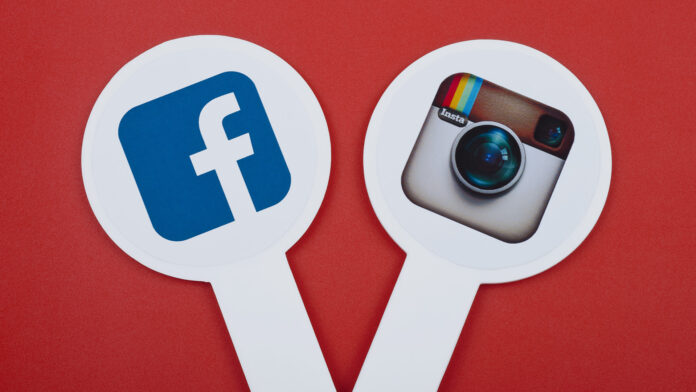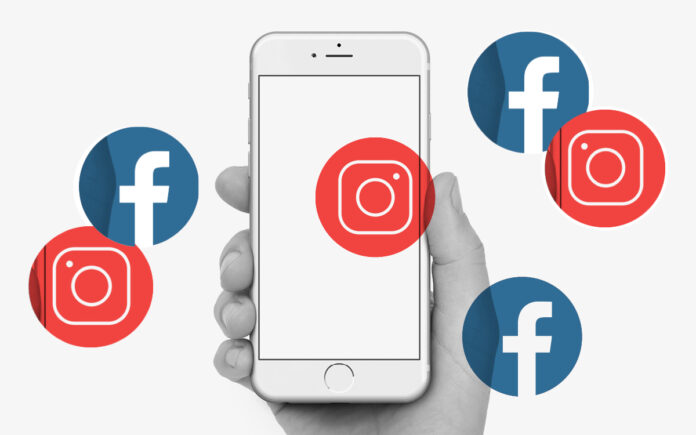Social media marketing is a versatile, cost-effective, and powerful tool for marketers and small business owners. It helps you reach your target audience, increases sales, makes your brand more recognizable, raises your conversion rate, increases traffic to your site, and even improves search engine rankings. Therefore, it is not surprising that more and more companies are venturing into incorporating social media into their marketing strategies.
Meta is currently the biggest social media company in the world for a reason: besides having over a billion users, it also owns two of the most popular social media platforms today, which are Facebook and Instagram.
Belonging to Meta also means these two share a lot of similarities when it comes to ad creation and management. For example, you can use the Facebook Ad Library to spy on competitors for both. Click here to read the guide on how to use Facebook Ad Library.
But they can also be significantly different, which often leaves many marketers wondering, which is better for advertising a product or service? This article answers the question by comparing them according to various factors.
1. Demographics

Facebook and Instagram are two of the most popular social media platforms, but they have very different user bases. While both attract a younger audience (the average age of users for these applications is between 25 and 34 years old), Instagram wins most of Generation Z’s hearts – or likes.
About 8.5% of Instagram users are 13 to 17 years old, according to HootSuite. Meanwhile, according to Statista, only 3.8% of Facebook users are within the same age group.
When it comes to geographic distribution, Facebook users are more evenly spread out around the world. In contrast, Instagram users are concentrated in North America, Europe, and Asia. In fact, Statista revealed that India has the largest population of Instagram users as of 2024.
These differences in demographics matter when choosing between Facebook and Instagram for publishing ads. If you want to target a specific generation or region, one platform may be better than the other. For instance, if you want to target teenagers in the United States, Instagram would be a better option.
2. Ad Types
Because they belong to the same company, the ad types you can publish on Facebook and Instagram are similar. Some popular choices include:
- Carousel Ads: A carousel ad shows multiple images or videos, and users can swipe to see more. This type of ad is especially popular on Instagram, as it’s a great way to show off products. The conversion depends on how successful the publication is. Use the right triggers and calls. Otherwise, you risk getting a lot of reach and few targeted actions. Make sure that the first slide attracts the person’s attention as much as possible, and the last one encourages you to click on the button.
- Video Ads: Both Facebook and Instagram are great for video content, as over 500 million people watch videos on Instagram every day, and 8 billion videos are watched on Facebook daily. In the first three seconds, your subscribers should understand that in front of them is not just a picture but a video. These first seconds are critical to interest the subscribers, catch their attention and involve them in watching the entire video. And, perhaps, even encourage you to watch the video with the sound turned on. But you should be aware that your video should be understandable without sound.
- Collection Ads: Also known as “Instant Shopping,” collection ads are perfect for e-commerce businesses. They allow users to browse products and make purchases without leaving the app.
- Stories Ads: Full-screen ads where you can share photos and videos with your audience. Their advantage lies in the maximum content nativeness, which ensures good engagement, even if the account has few followers.
The main thing to remember is that the call to action should be concise and concise. After all, the picture “holds” on the screen for only a couple of seconds, and the video automatically scrolls after playback.
One of the biggest differences is that users cannot click the link on the ads if they’re viewing them on Instagram. As an advertiser, you still have to add a call-to-action button that you have to link to your landing page.
3. Kind of Content

When it comes to the content you can publish on each platform, there are again some similarities. For instance, both Facebook and Instagram Stories are popular among users, with 500 million people using them every day.
But there are also differences. For example, while Facebook is better for long-form text content such as blog posts, Instagram is better for visual content such as photos and videos. This is because Instagram is, first and foremost, a photo-sharing app.
4. Engagement Rate
Engagement rate is the number of people who interact with your content divided by the number of people who see it. It’s a good metric to use to compare the performance of your ads on different platforms.
When it comes to engagement rate, Instagram usually wins. In fact, one study showed that Instagram posts have a higher average engagement rate than Facebook posts. According to Sprout Social, in general, the median engagement rate for every post on Instagram is 1.60%. A Facebook post generates less than 0.10%.
People interact more with posts on Instagram than they do with posts on Facebook. This is because Instagram is made for sharing photos and videos, which people like to look at and react to.

The Bottom Line
Both Facebook and Instagram have a lot to offer in terms of advertising and will give you a high ROI. So, take advantage of two platforms at once! Keep in mind that some types of ads work best on one platform and some work best on another (such as image and video ads). After all, there are many opportunities and strategies that you can use on these two great social networks.
There are pros and cons to both Facebook and Instagram ads. It really depends on your business goals as to which one is better for you. If you want to target a specific age group or region, one platform may be better than the other. If you’re looking for higher engagement rates, Instagram may be a better choice.








